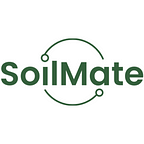SoilMate’s Weekly News Digest #23
The headlines of this week: new corn herbicide and new insecticide seed treatment, the future of agriculture with innovative robots and newfound factors influential on crop development.
Corteva Agriscience announced a new corn herbicide and new insecticide seed treatment
The new Lumiderm seed from Pioneer helps soybean producers protect the genetic potential of their seed stock from twice as harmful pests. Lumiderm also provides additional benefits, including a stable yield advantage of 1 to 2 bushels per acre in multi-year trials and an 8% reduction in unprotected fields.
Resicore XL is a preplant, pre-, and postemergence corn herbicide with three powerful mechanisms of action. The new product will offer improved crop safety and flexibility of application on corn over 11 inches high to control more than 75 toughest weeds.
The future of Agricultural Robots
The potential of agricultural robots to increase farming efficiency and replace human labor is especially appealing to agricultural countries around the world, all of which funds research projects to develop this technology. According to an analytical company Tractica, the world market for agricultural robots is estimated at $74 billion in 2024.
The future of agriculture was demonstrated at a competition for innovative agricultural robots in China when teams from universities, research institutes, and technology companies demonstrated their innovations. The submissions that garnered all the attention were a tomato-planting robot that reduces the amount of human labor in crop spraying and pollination, inspection, and transportation and an automatic vaccine-injection machine for fish.
Research: how to balance drying fields and nitrogen retention
And finally, we have a find-outs from the researchers from the University of Purdue who conducted a three-year experiment to discover how different agricultural practices and drainage strategies affect crop growth and the loss of nitrogen from fields. Scientists explored how the fields worked in the last 16 years compared to the previous 15 years and highlighted the effect of different degrees of drainage. The concentration of nitrates in water was the same regardless of the drain spacing. But as the closer run-off resulted in a larger water flow, the total amount of nitrogen coming out of the fields was higher when the run-off was closer to each other. Consequently, if we drain more water faster, we also drain more nitrates.
Study: how increased climate changes and elevated ozone levels effects crop developing
Researchers from North Carolina State University have analyzed the interaction of warming and increasing ozone levels with important underground organisms, arbuscular mycorrhizal fungi (AMF) that promote chemical interactions that hold carbon in the ground, prevent the decomposition of soil organic matter, and block carbon leakage from decomposing material. The researchers created soybean yields with elevated temperatures of about 3 degrees Celsius, higher ozone levels yields, yields with higher levels of both warming and ozone, and yields with no changes. The resulting experiments have shown that warming and increasing ozone levels make soy roots thinner as they save resources to produce the necessary nutrients.
